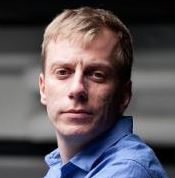



 Martin S. Poulsen is a Danish journalist with a keen interest in international affairs.
Martin S. Poulsen is a Danish journalist with a keen interest in international affairs.





 Martin S. Poulsen is a Danish journalist with a keen interest in international affairs.
Martin S. Poulsen is a Danish journalist with a keen interest in international affairs.
To suggest a correction or clarification, write to us here
You can also highlight the text and press Ctrl + Enter
Please leave your suggestions or corrections here

We are an independent media outlet that relies solely on advertising revenue to sustain itself. We do not endorse or promote any products or services for financial gain. Therefore, we kindly ask for your support by disabling your ad blocker. Your assistance helps us continue providing quality content. Thank you!
March 4 – According to the US military, Russia is supporting the separatists in eastern Ukraine with approximately 12 thousand Russian soldiers.
March 4 – Ukraine is unilaterally suspending an agreement on local border traffic between Ukraine and the Russian Federation, -informed Ukraine's Prime Minister Arseniy Yatsenyuk.
March 4 – Russian President Vladimir Putin has demanded that his security agencies react instantly to activities of extremists who use "coloured revolution technologies."
March 4 – President of Ukraine Petro Poroshenko has sent Russia's President Vladimir Putin a letter requesting an immediate release of Ukrainian pilot Nadiya Savchenko. Unfortunately the successor to Felix Dzerzhinsky would rather destroy his victim than free her...
March 4 – President of Ukraine Petro Poroshenko has expressed hope that OSCE mission locates its observation post at Donetsk airport. He is just kidding...
March 4 – First President of Ukraine Leonid Kuchma who is also the representative of the contact group [on conflict resolution in Ukraine] has said that negotiations on Donbas situation are very problematic, and that Russia does not want to allow the United States to join the negotiations. It is much easier for Russia to negotiate with Ms.Merkel, of course...
March 4 – The bodies of 9 miners were recovered at Zasyadko mine in Donetsk. Overall 14 miners have died in an accident there. The mine is located within the areas occupied by Russian terrorists.
March 4 – The US and the EU will discuss a possible deepening of sectoral sanctions against Russia if ceasefire with Ukraine will be violated, – stated Victoria Nuland, Assistant Secretary of State for European and Eurasian Affairs at the United States Department of State. But does this American lady understand that she is dealing with the follower of Nikolai Yezhov... how sad is this?...
March 4 – EU High Representative for Foreign and Security Policy Federica Mogherini has urged Russian authorities to release Nadiya Savchenko, Oleg Sentsov and other illegally detained Ukrainian citizens. But does this European lady that she is dealing with a dedicated follower of Lavrentiy Beria... sad, isn't it?...
March 4 – In the estimation of American soldiers, Russia supports the seperatists in Eastern Ukraine by about 12,000 soldiers. This was stated by the Commander of U.S. Ground Forces in Europe, General-Lieutenant Ben Hodges in Berlin on March 3rd in the evening, informed DW with bck-up from Reuters. This refers Russian army instructors, technicians who man current weaponryand direct fighter units. According to him,n addition to the named numbers one should also include almost 29,000 soldiers who are dislocated in Crimea. Until the annexation on the peninsula, in accordance with the agreement between Russia and Ukraine, there could be up to 25,000 servicemen, reminds the agency. Also approximately 50,000 soldiers, according to Hodges, are on Russian territory with a direct proximity to the Ukrainian border – in case the separatists suffer serious defeat, as it was at the end of 2014.
US Soldiers Readying for Ukraine Deployment
The US Army is preparing to send approximately 300 troops at a time to train Ukrainian forces in western Ukraine, according to documents posted on a government contracting site.
In Russia, victims may change, but little else does (video)
P.S.: Please spread this appeal as much as possible.